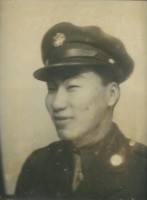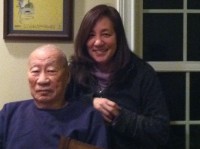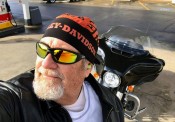 Clarksville, TN – George Nishimura joined the United States Army at a time when America was at war. This teenager did what thousands of Japanese-American men did at the time, to show their patriotism to the country that had been their home all of their lives.
Clarksville, TN – George Nishimura joined the United States Army at a time when America was at war. This teenager did what thousands of Japanese-American men did at the time, to show their patriotism to the country that had been their home all of their lives.
George was at home when he heard all of the noise and commotion going on in the neighborhood. He soon learned that guys coming home from Honolulu saw planes, Japanese planes, bombing Pearl Harbor. When he turned on the radio he heard the announcer shouting, “Pearl Harbor is under attack! This is not a drill!”
George remembers;“We were all stunned. We couldn’t believe what we heard, especially that we were under attack from Japan. U.S Military maneuvers were being held at the time so we were used to the activity, but the sighting, confusion and noise told a different story.”
George was working at Service Motor Co. as an apprentice mechanic. After a quick breakfast, he went to the apartment of a friend. They were discussing the day’s events when they heard the sound of planes.
This was the second wave of Japanese bombers.
He and his friend got on the roof of the auto repair shop and sat and watched the planes coming over the mountain and bombing Wheeler Field. In hindsight, George thought how foolish it was for them to be there. When the planes were pulling up from their dives, they came right towards him. If one of the pilots had kept his finger on the trigger, he could have been shot.

Two weeks later, the Hawaiian Territorial Guard was formed. George quit is job and volunteered. George and his brother Walter had been accepted. After serving some time with this group, they got orders to ship out on March 3rd, 1943.
The 442nd left Schofield Barracks by train. They got off at the Dole Pineapple Plant in Wahiawa then to Honolulu. From there, they marched to Iolani Palace grounds, loaded with all of their equipment. George thought he would never make it carrying all that gear. They stood listening to a speech at the palace grounds, and after the ceremony they marched to Pier II to board the S.S Lurline, a former luxury ship converted to a troop transport.
George remembers the trip as “five days of hell” while crossing the Pacific. He was seasick most of the time, and couldn’t hold any food down. His brother worked in the mess hall and would bring him fruit and crackers. All the other guys on the ship were having a good time, playing games, and gambling.
They finally passed under the Golden Gate Bridge and docked. There, two troop trains were waiting. The troops loaded up and headed to Camp Shelby Mississippi.
It would take a while.
George would spend his career as part of the MIS as a language officer.
His long journey had ended. Training would begin.
The country was at war, and this unique group of Japanese-American men were in the hot-bed of the south. How would Mississippi treat these Japanese-American soldiers of the United States Army?
George Nishimura who will turn 90 on Monday, will be honored on Friday, February 22nd in a ceremony at F&M Bank’s Franklin Room. He will receive his Congressional Gold Medal Bronze Replica for his service to his country.
Tomorrow, more history is made by the 442nd.


